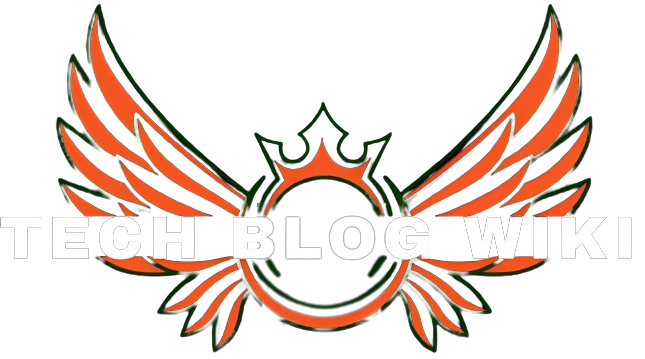Artificial Intelligence has grown significantly in recent years, and one of the most exciting developments has been the emergence of conversational AI models like ChatGPT.
Powered by deep learning algorithms, ChatGPT is based on the GPT-3.5 architecture, and it has proven to be incredibly versatile in various domains.
ChatGPT has a comprehensive range of ChatGPT use cases that have transformed how businesses and individuals interact with AI-powered systems, from enhancing customer support to assisting with content creation.
This Techblogwiki article will explore some of the best ChatGPT use cases you should know about.
What is ChatGPT and How Do I Use It?

ChatGPT is an advanced conversational AI model developed by OpenAI.
It is built on the GPT-3.5 architecture, which stands for “Generative Pre-trained Transformer 3.5.” GPT-3.5 is an evolution of the GPT-3 model specifically designed for natural language processing and understanding.
The key feature of ChatGPT is its ability to engage in human-like conversations. It can understand natural language input and produce contextually relevant responses.
The model has been trained on a vast amount of data from the internet, allowing it to grasp a broad range of topics and generate coherent and meaningful text.
Artificial intelligence (AI) has significantly transformed various aspects of our lives in recent years. You can use AI voice changer technology too, for that just explore our latest article.
How to Get Started With ChatGPT API?

To use ChatGPT, you must access it through an API (Application Programming Interface).
Here’s a step-by-step guide on how to get started with ChatGPT:
1. Get API Access:
OpenAI offers access to the ChatGPT API, which allows developers to integrate ChatGPT into their applications or services. To get API access, you need to sign up for an OpenAI account and follow the instructions on their website.
2. Obtain API Key:
Once you can access the API, you will receive an API key. This key is essential for authenticating your requests to the ChatGPT API.
3. Make API Requests:
You can send a query to the ChatGPT API using HTTP requests. Typically, you request a POST to the API endpoint with your API key and the text you want ChatGPT to process. The API will respond with the generated text in the response.
4. Set Parameters:
You can adjust parameters to control the behaviour of ChatGPT. For example, you can set the temperature parameter to influence the randomness of the responses. Higher values like 0.8 make the output more creative, while lower values like 0.2 make it more focused and deterministic.
5. Format the Input:
To get the best results from ChatGPT, you should format your input with clear instructions or a system message. For example, you can start the conversation with a system message like “You are a helpful assistant” to set the context for the AI.
6. Respect the Usage Limits:
The ChatGPT API has usage limits; you should be mindful of them to avoid exceeding your allowed quota. Review OpenAI’s documentation for the latest information on usage and rate limits.
7. Iterate and Improve:
Experiment with different prompts, parameters, and use cases to fine-tune the AI’s responses. Getting the desired results may take trial and error, but continuous iteration can lead to better interactions with ChatGPT.
List of the Best ChatGPT Use Cases

Here are the best ChatGPT use cases, as they follows:
1. Customer Support and Service
ChatGPT can play a crucial role in revolutionizing customer support. Companies can quickly and accurately respond to customer queries by integrating them into chatbots or live chat systems.
ChatGPT’s ability to understand natural language and context enables it to engage in meaningful conversations, leading to a more satisfactory customer experience.
With the potential to handle routine inquiries, troubleshoot problems, and provide relevant information, ChatGPT can significantly decrease the workload on human support agents, letting them concentrate on more complex and strategic assignments.
2. Content Creation and Editing
ChatGPT can be a valuable tool for developers, writers, and editors. It can assist in generating blog posts, articles, social media content, and more.
Users can provide prompts, keywords, or topic ideas to ChatGPT, producing coherent and relevant content using ChatGPT.
Additionally, writers can use ChatGPT for proofreading and editing, as it can identify grammar errors and sentence structure issues and provide suggestions to enhance the overall quality of the content.
3. Language Translation
Breaking language barriers becomes more accessible with ChatGPT’s language translation capabilities.
It can facilitate real-time translation between languages, allowing users to communicate effectively with people from different linguistic backgrounds.
Whether for personal or business use, ChatGPT can improve cross-cultural communication and connect the world more.
4. Programming Assistance
Even for developers and programmers, ChatGPT can be a helpful resource. When faced with coding challenges or errors, developers can turn to ChatGPT for Assistance.
It can provide code snippets, explanations, and debugging tips, making it a valuable companion in software development.
5. Personalized Recommendations
ChatGPT’s ability to understand user preferences and behaviour makes it an excellent tool for personalized recommendations.
Businesses can use ChatGPT to suggest products, services, or content based on user interactions, leading to a more tailored and engaging customer experience.
6. Educational Support
In the field of education, ChatGPT can act as a virtual tutor. Students can ask questions, seek explanations, and clarify doubts across various subjects.
This interactive learning experience can supplement traditional education and promote self-paced learning.
7. Creative Writing and Storytelling
For creative writers and storytellers, ChatGPT can be a source of inspiration. It can generate plot ideas, character descriptions, and even entire storylines, sparking creativity and as a brainstorming tool.
8. Medical Assistance
ChatGPT has shown promise in the healthcare industry, where it can assist medical professionals by providing relevant information on diseases, symptoms, and treatments. It can also offer general health advice and promote healthy living practices.
9. Virtual Assistants
ChatGPT can act as a virtual assistant, allowing users to manage their schedules, set reminders, answer questions, and perform various other tasks, similar to popular virtual assistants like Siri or Alexa.
10. Game Interactions
Integrating ChatGPT into video games can enhance players’ experiences. The AI can act as non-player characters (NPCs) with more advanced dialogue options, creating a more immersive gaming environment.
Despite its numerous benefits, it’s essential to note that ChatGPT use cases also has limitations, such as its inability to understand the context in a broader conversation and potential biases present in its training data.
Nonetheless, as research advances, these limitations are expected to be addressed in future iterations.
Conclusion
ChatGPT has emerged as a groundbreaking technology with diverse applications across various industries and domains.
Its ability to understand natural language and engage in meaningful conversations has opened up a world of possibilities for businesses and individuals alike.
As AI technology progresses, we can expect even more exciting ChatGPT use cases and similar conversational AI models in the future.
Stay tuned for the next updates!!






